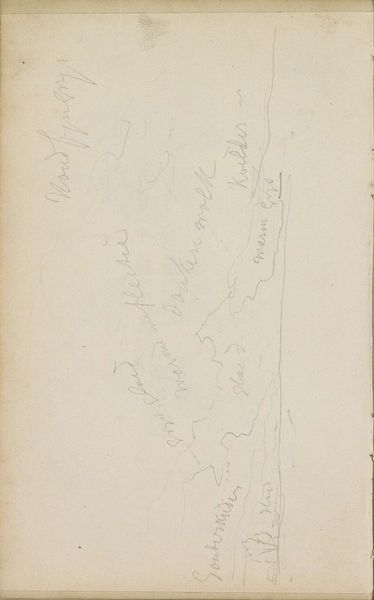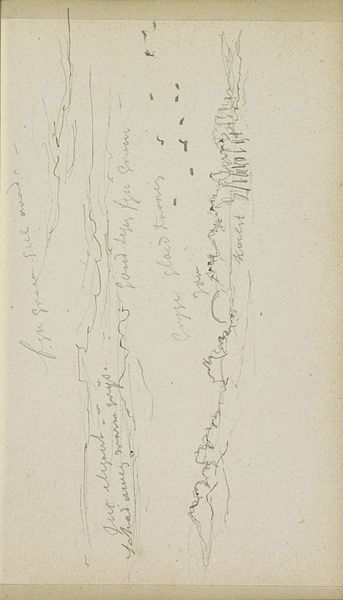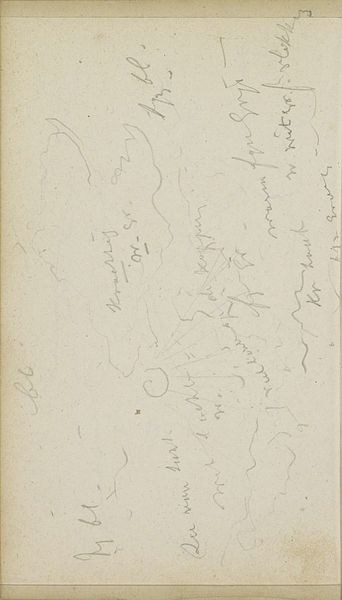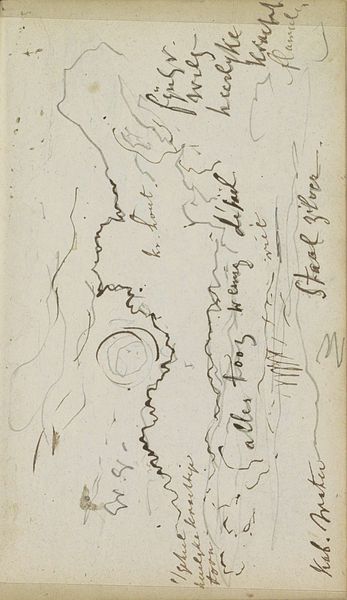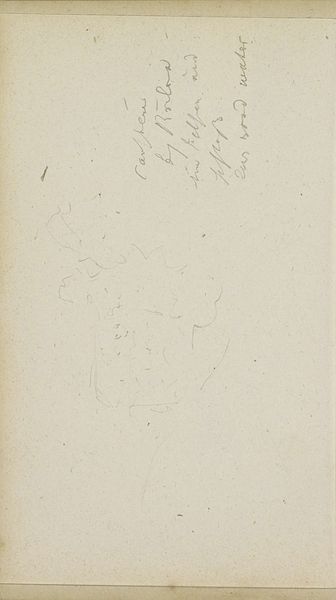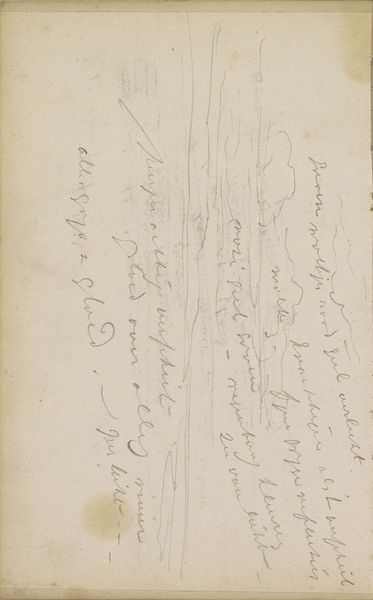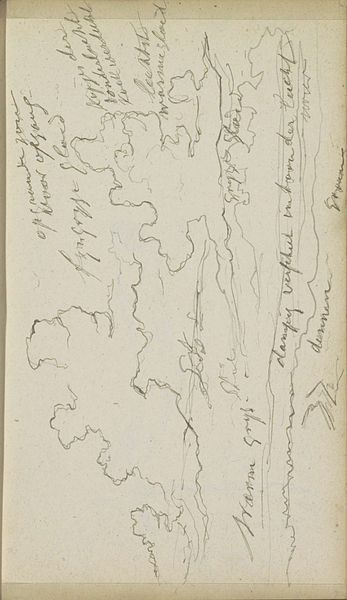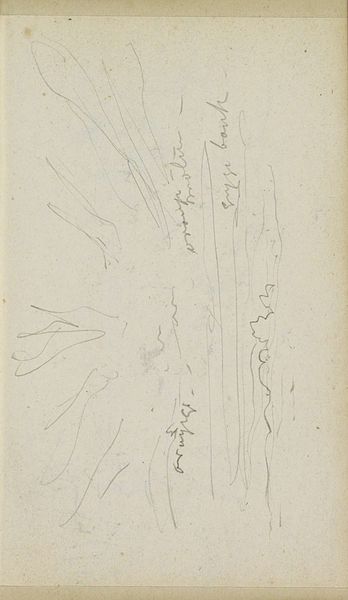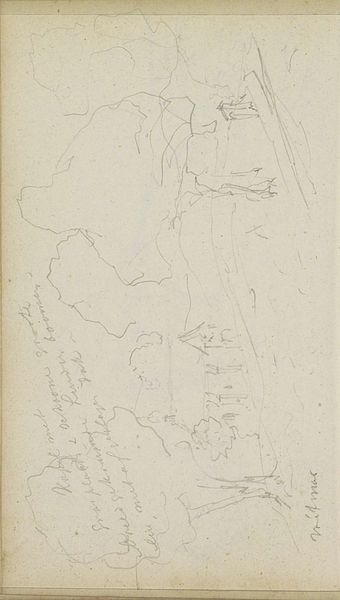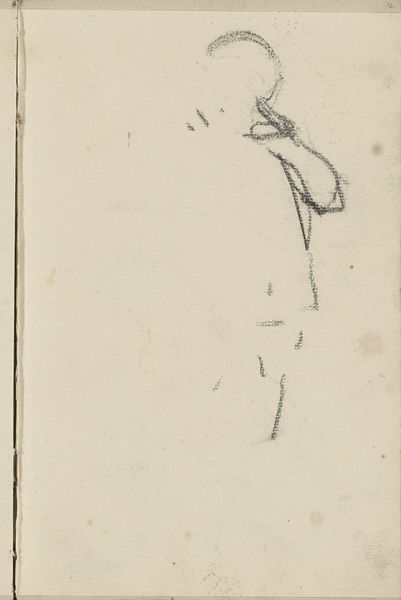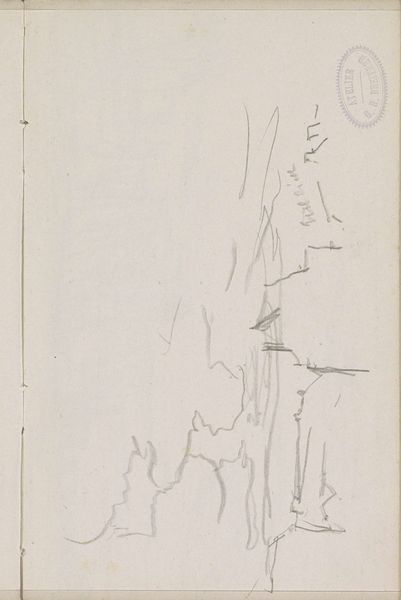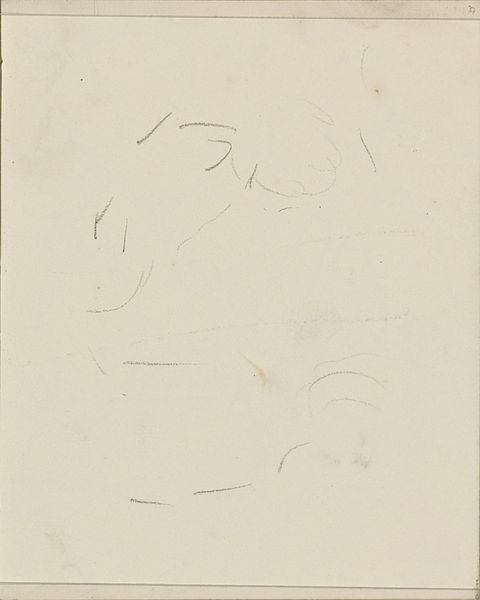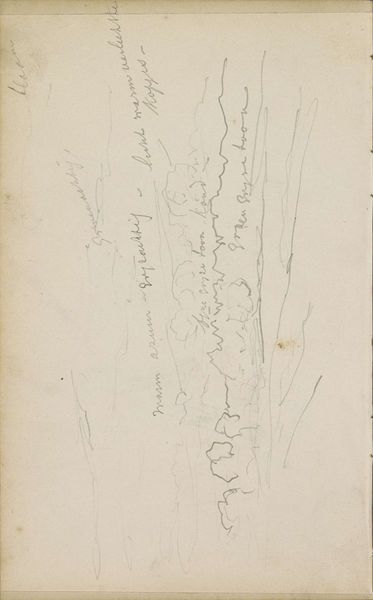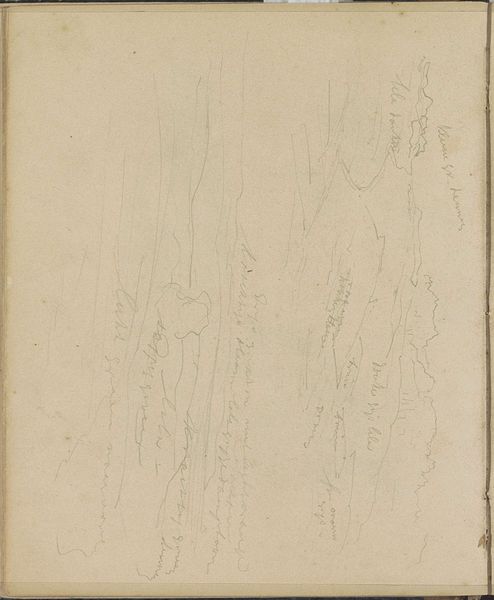
Copyright: Rijks Museum: Open Domain
Curator: Before us is "Lucht," a drawing by Johannes Tavenraat, created sometime between 1839 and 1872. It’s a pencil sketch on paper. Editor: It’s ethereal, almost ghostly. The landscape seems barely there, like a fleeting memory captured in delicate lines. The soft grey against the pale paper evokes a sense of melancholy. Curator: Yes, there is a palpable sense of transience to it. Tavenraat’s technique suggests an interest in capturing not just the physical form of the land but also its atmosphere, perhaps aiming for a specific feeling that open space invokes. We see this interest aligning with the Romanticism movement of his era. Editor: And this feeling is inextricably linked with the people connected to that landscape and with concepts of property, possession and even of colonization through representation. Who was free to access and benefit from this open space? How does this freedom, or lack thereof, intersect with other social dimensions? Curator: The lines definitely leave much open to the imagination. What do you make of the handwriting sketched within the image itself? Editor: Well, it immediately personalizes the sketch, inserting the artist's voice or intentions, but maybe not fully. The incomplete words also add another layer of enigma, a puzzle demanding viewers try to imagine and reimagine possible links. This reinforces that fleeting quality and the need for ongoing critical engagement. Curator: Absolutely, they prompt one to contemplate the very nature of observation, remembrance and representation. There is such nuance within each thin, soft stroke. Editor: Precisely, we mustn't passively accept these strokes; the silences, the erasures, these are equally loaded sites of struggle over the power to determine whose stories are valued within Dutch heritage. What feels “natural” has always been deliberately, socially manufactured. Curator: A pertinent reminder. Looking closer, the stark beauty in such a rudimentary rendering—there is a universal vulnerability evident when we find ourselves dwarfed by vast spaces. The drawing seems to subtly evoke it through what is left out rather than added in, through its gentle touch. Editor: True. Art at its best serves as an opportunity to collectively unearth what histories linger like these half-drawn outlines. Let’s carry its questions of accessibility forward, questioning the foundations and purpose behind landscape, culture, and belonging. Curator: Indeed. A sketch which prompts introspection not just for us, the viewer, but for society too.
Comments
No comments
Be the first to comment and join the conversation on the ultimate creative platform.
